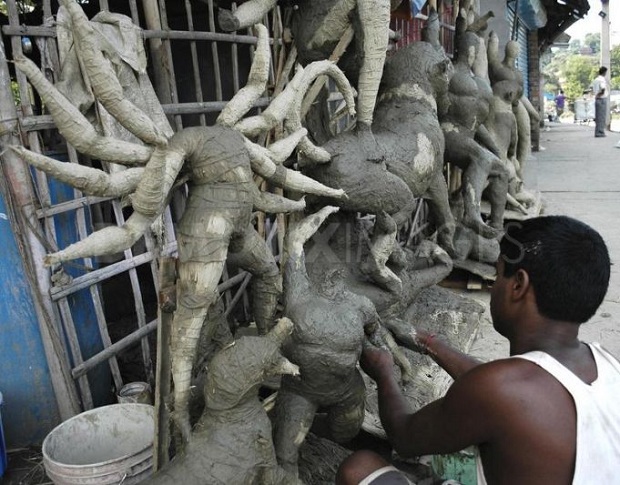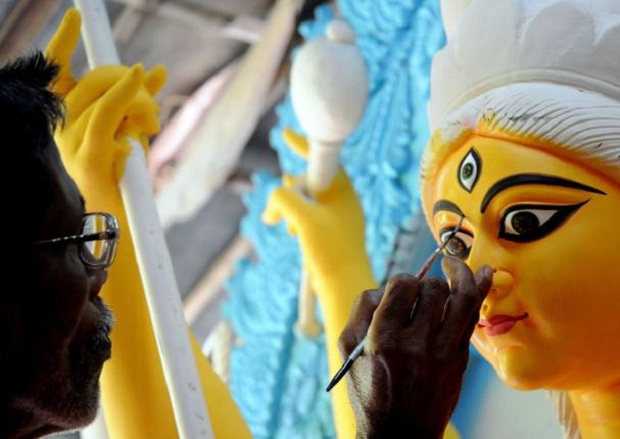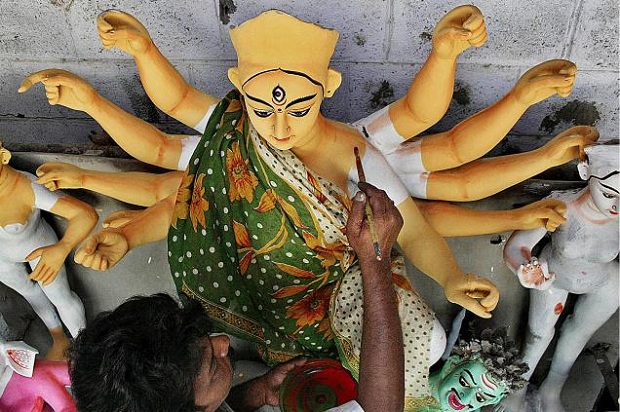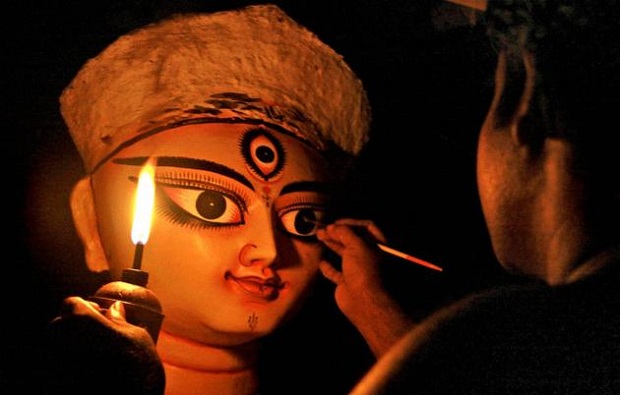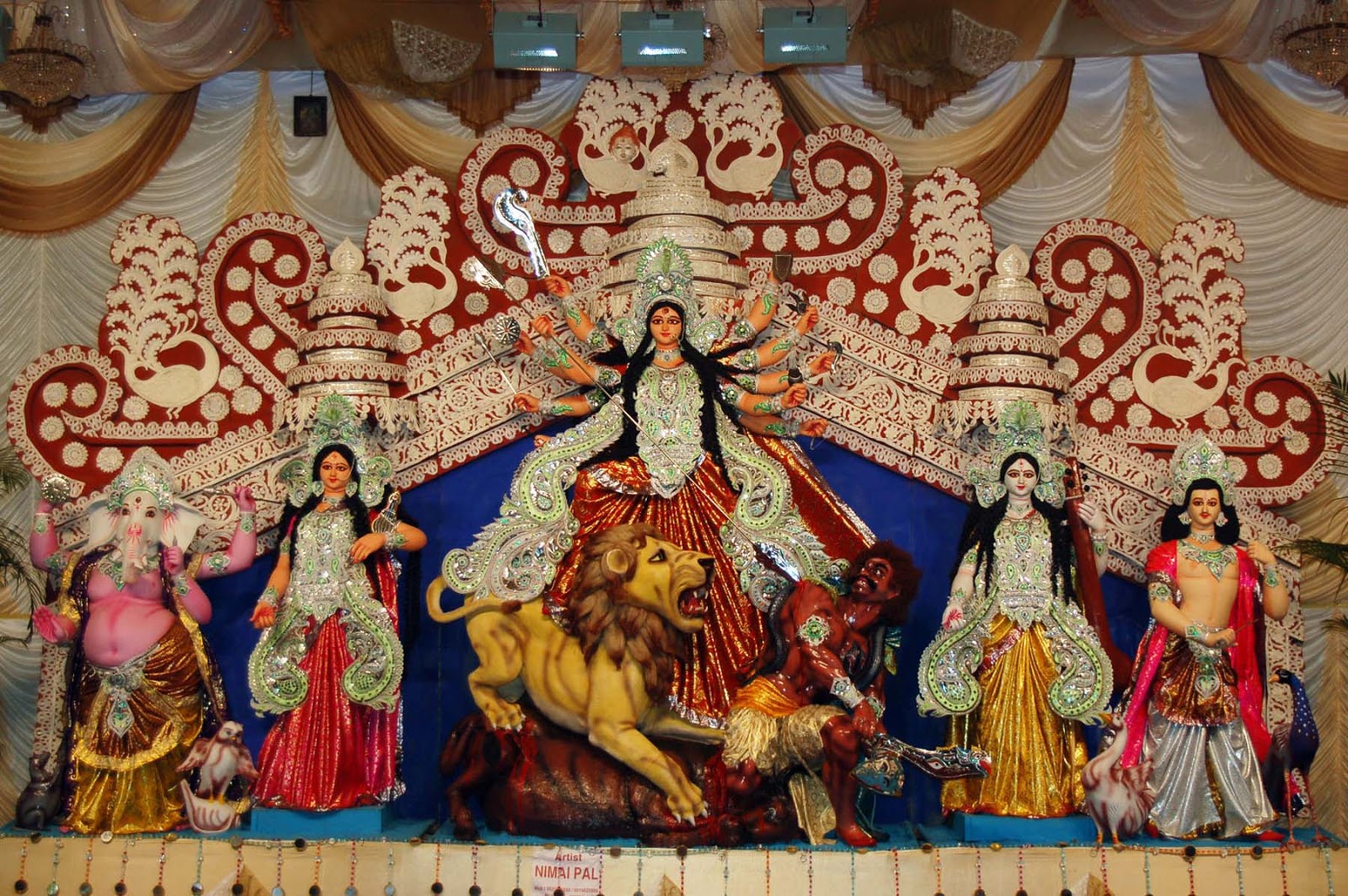The Durga Pooja is a Hindu Festival. Durga Pooja is the greatest festival in West Bengal. It is celebrated in the month of Ashwin i.e. October. The festival is very popular and memorialized with great pomp and show. It’s mainly celebrated in West Bengal, Assam, Tripura, Jharkhand, Odisha, and Manipur. Durga Pooja marks the victory of Goddess Durga over evil demon Mahishasura. The festival is celebrated for 10 days, although there is more enjoyment during the last 4 days. The festival honors the powerful female force in the Universe.
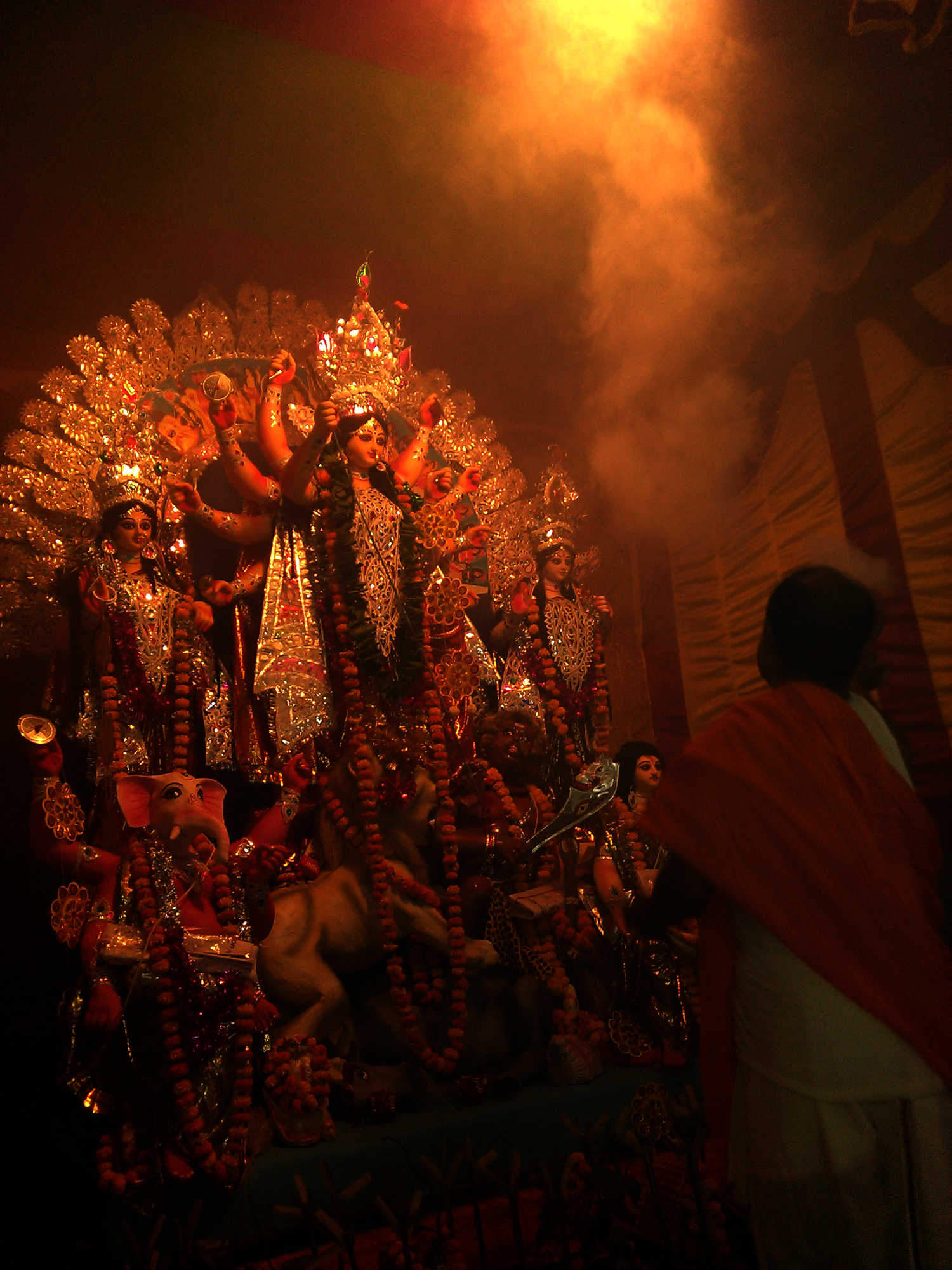
Well, Durga Pooja is the biggest and very important occasion of the year in Kolkata, the capital of West Bengal. Here, we see big crafted statutes of Goddess Durga installed in homes and beautifully canopied pandals all over the city. At the end of the festival, the statues are marched through the streets, followed by much music and dancing, and then submerged in the Ganges River.
Making Goddess Durga:
The best part of the Durga idol is crafted in Kumartuli in North Kolkata. Idols of the goddess are made to remember the success of good over evil. The idols of Durga are made with so much care that they appear like life when completed. During a special ritual called Chokkhu Daan, eyes are drawn on the idols of Goddess Durga. This is completed on Mahalaya, about a week before the start of the Durga Pooja festival.
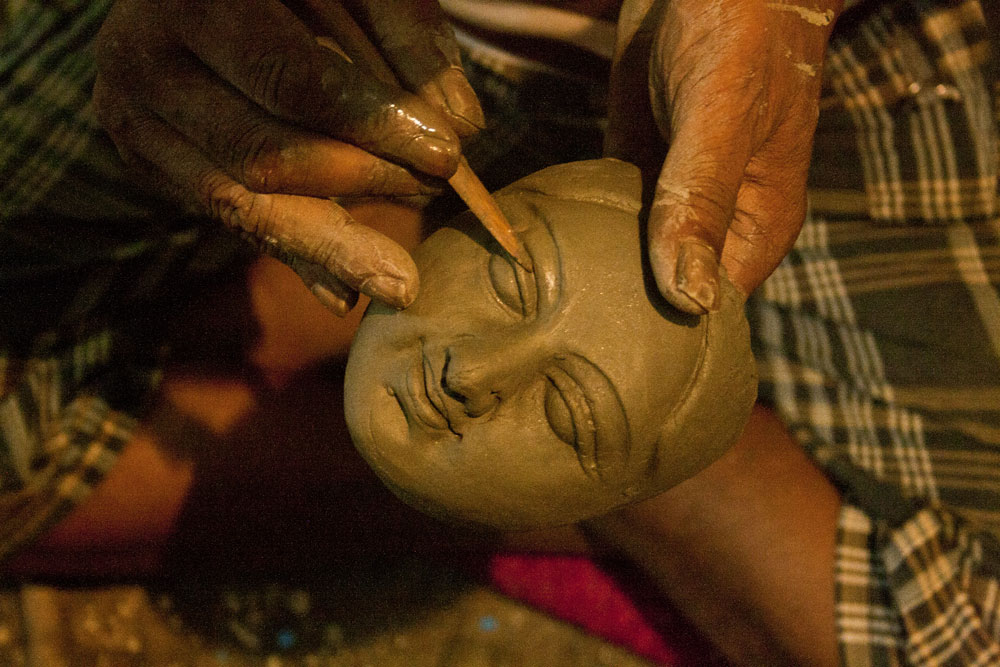
Durga Pooja Pandal:
Each Durga Pooja Pandals have different themes. Some maintain the traditional presentations, while others are contemporary. Innovative ideas and great minds use exciting artwork; in fact, many Pandals are also formed on the theme of world-famous monuments, etc.
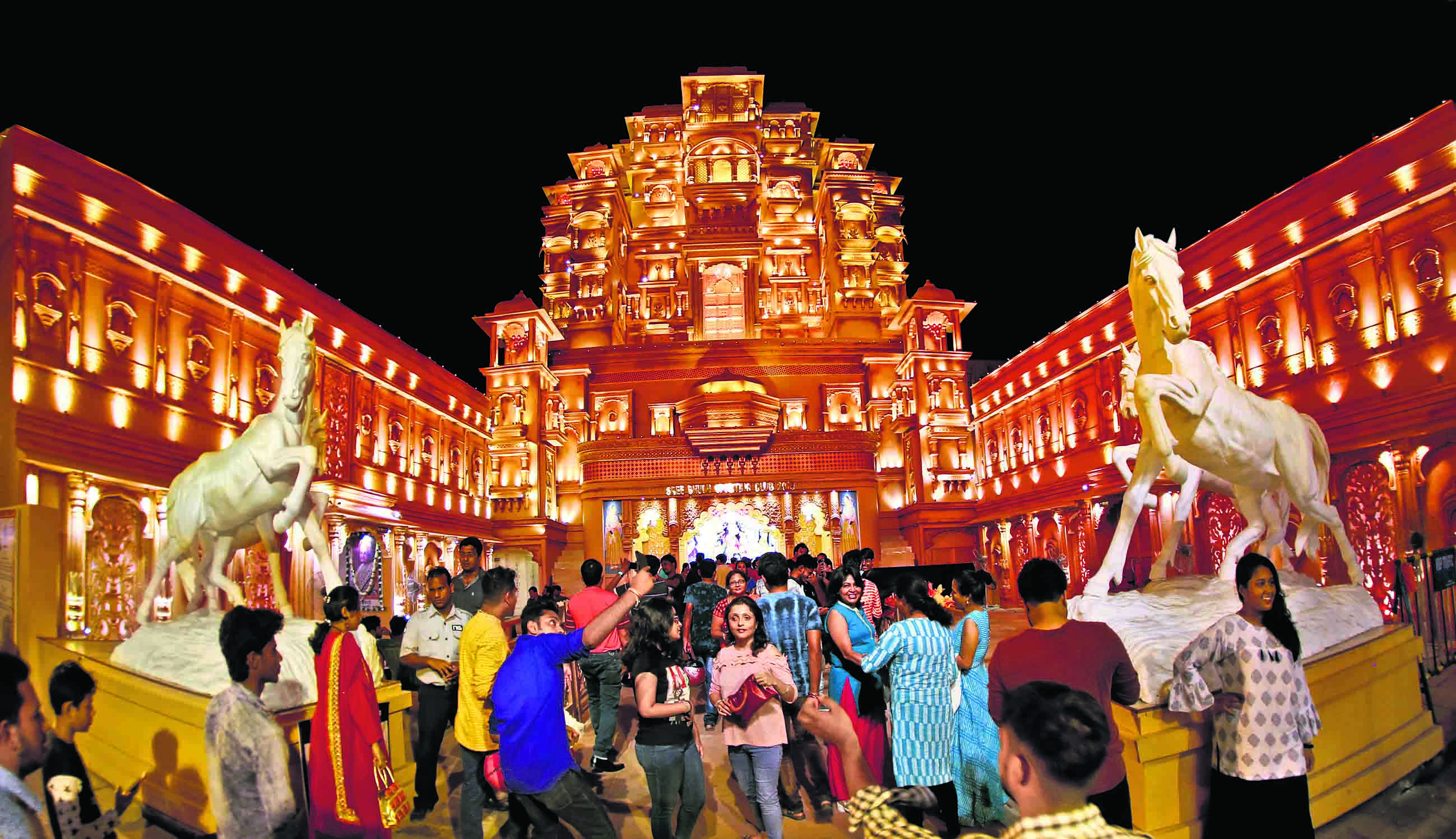
Traditional Durga Idol:
Here, Durga is presented with four children. Statues of Goddess Durga, Goddess Lakshmi, Goddess Saraswati, Lord Kartik, Lord Ganesha, and Bad Mahisas are kept in pandals for worship and honor by the audience.
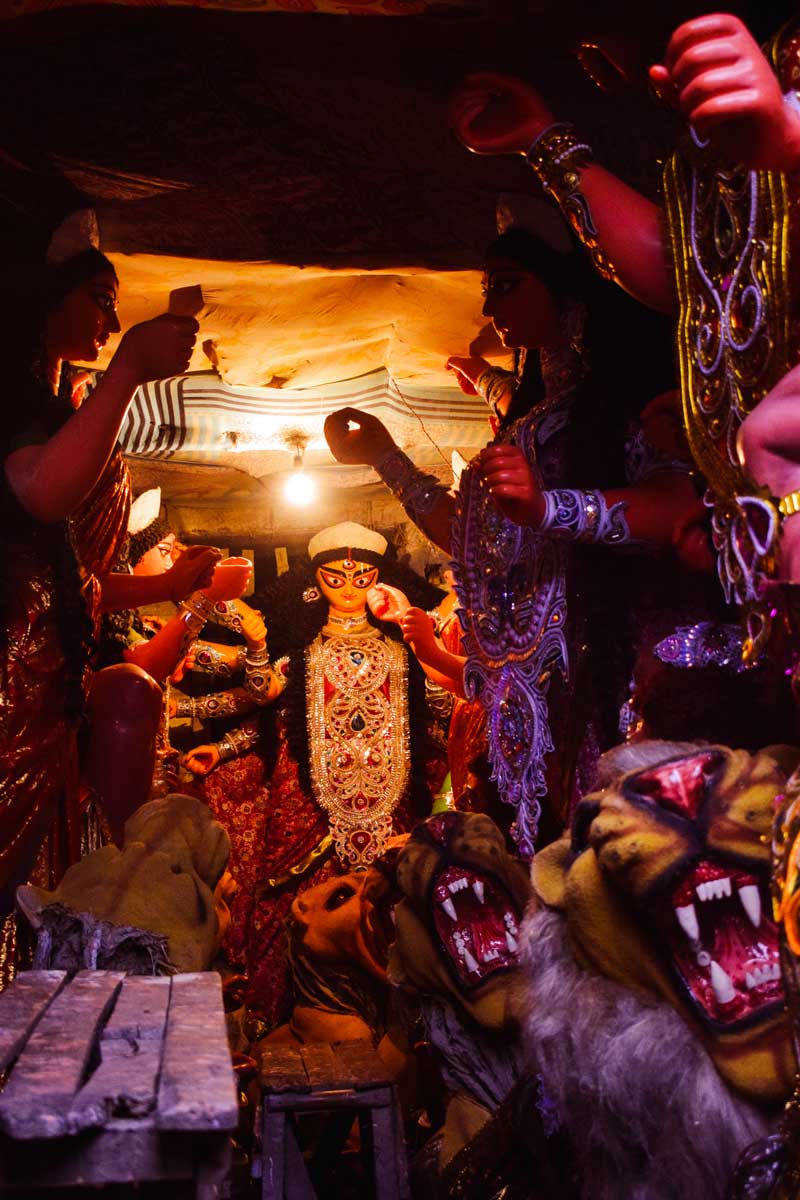
Contemporary Idols:
Contemporary Durga idols are crafted in different styles, especially without the rich decorations that the traditional idols have. Statues of Goddess Durga are kept single.
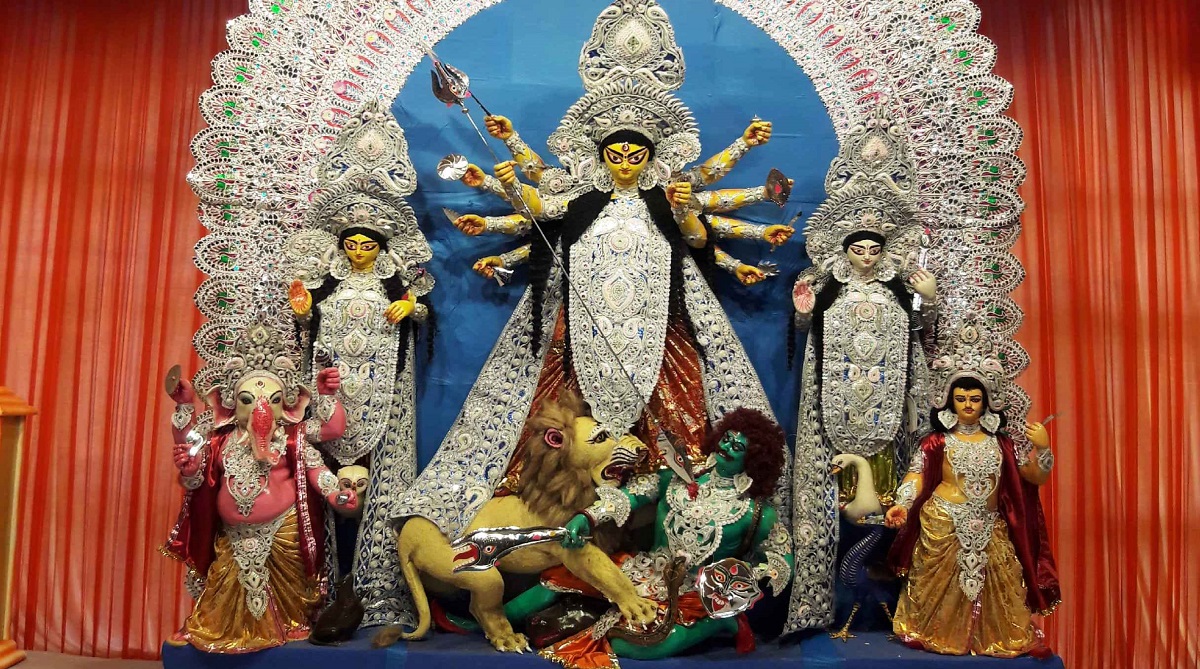
Bonedi Bari Poojas:
In the city’s Palatia Old Private mansions, traditional “Bonedi Bari” poojas are held. The mansions belong to landowner families who have been carrying on the Poojas for centuries.
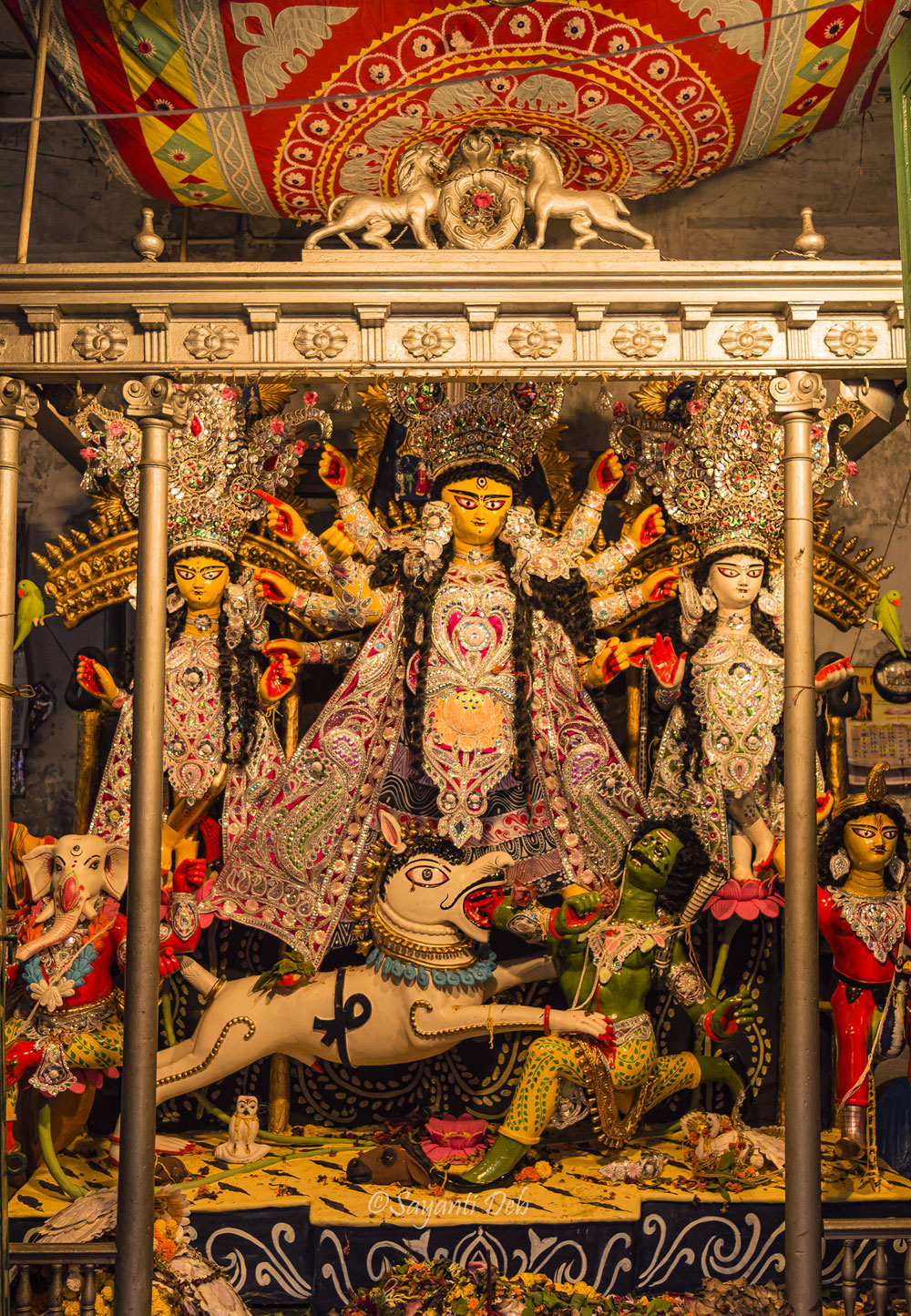
Seeking Durga’s Blessing:
Followers and Tourists from all over the world come and seek blessings; especially women come here to seek blessings of Goddess Durga during the festival. At certain times Priests perform Aarti Ceremonies. These are popularly attended by Devotees.
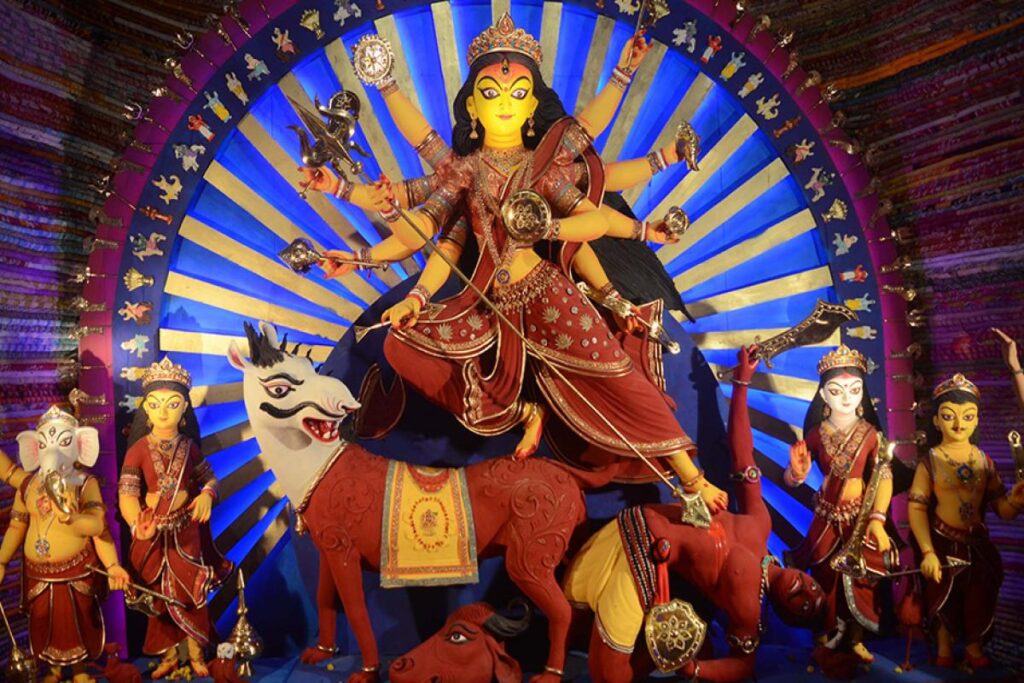
Performing the Dhunuchi Dance:
The most popular part of Durga Pooja rituals is performance. That is performed by devotees, of the Dhunuchi Dance in front of the Goddess. This is finished with a Dhunuchi filled with a smoking mixture of camphor, incense, and coconut husk.
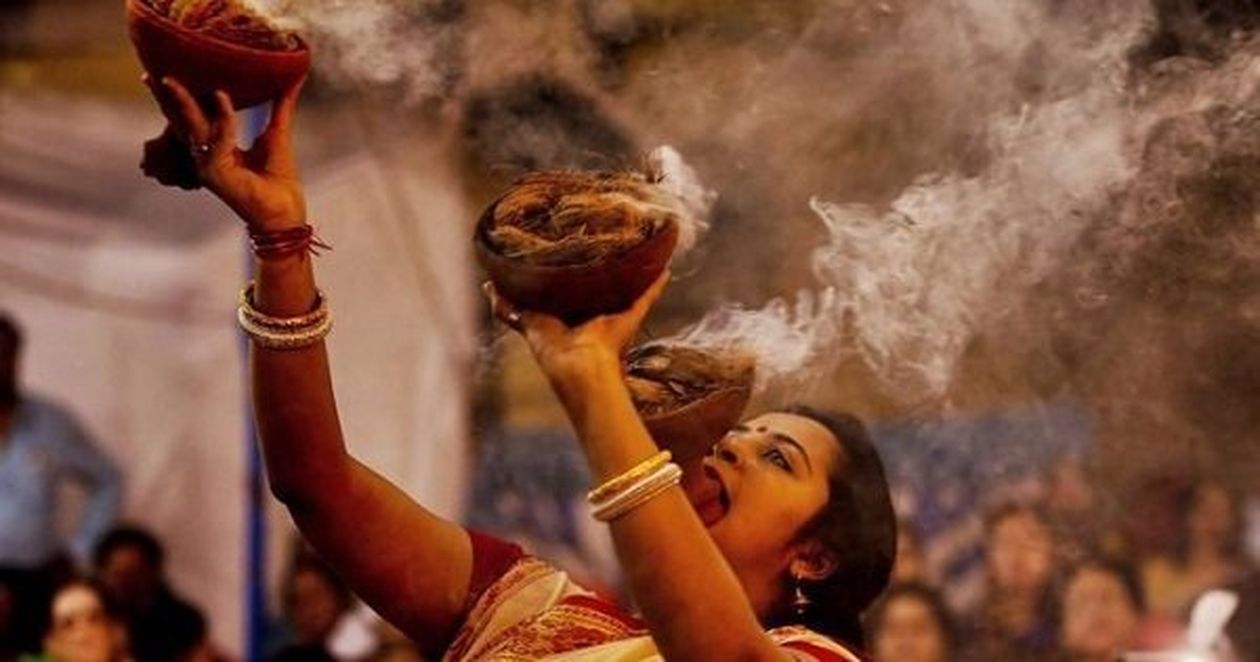
Sindoor Khela Ritual:
Goddess Durga returns to her husband’s residence and the statutes are taken for engagement. Married women offer sindoor to the Goddess and spread themselves with it. Sindoor denotes the status of marriage, and hence bearing of children. This custom is known as Sindoor Khela.
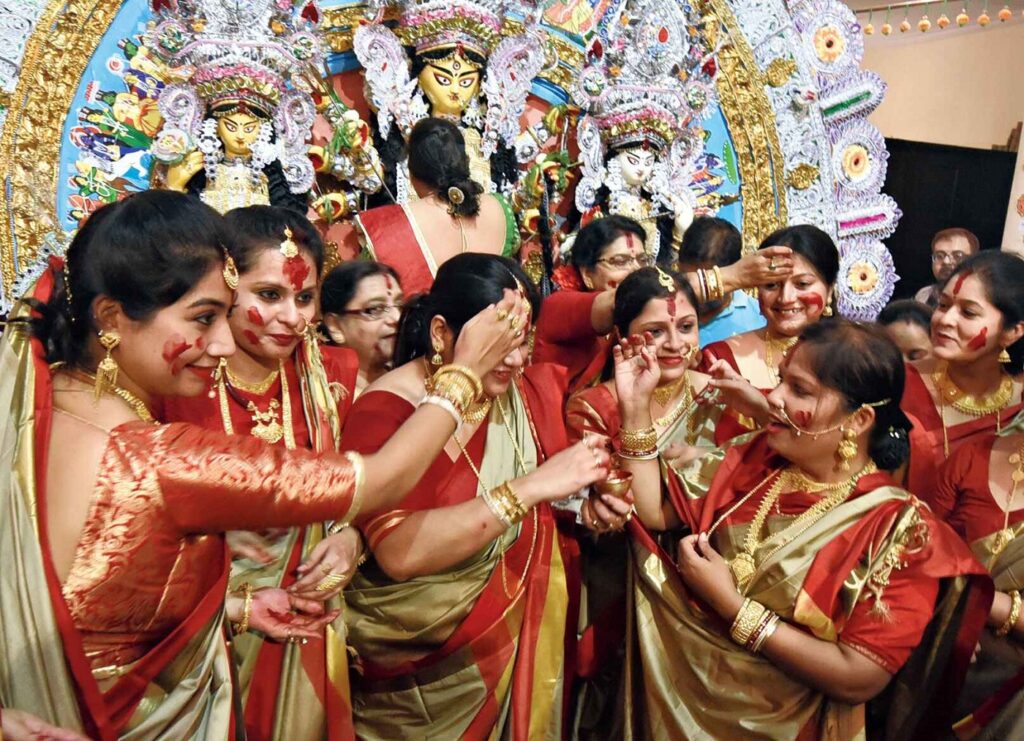
The End of the Durga Pooja Festival
At the end of the festival, after the completion of Worshipping, the statues of Goddess Durga are taken out and submerged in the Ganges River.
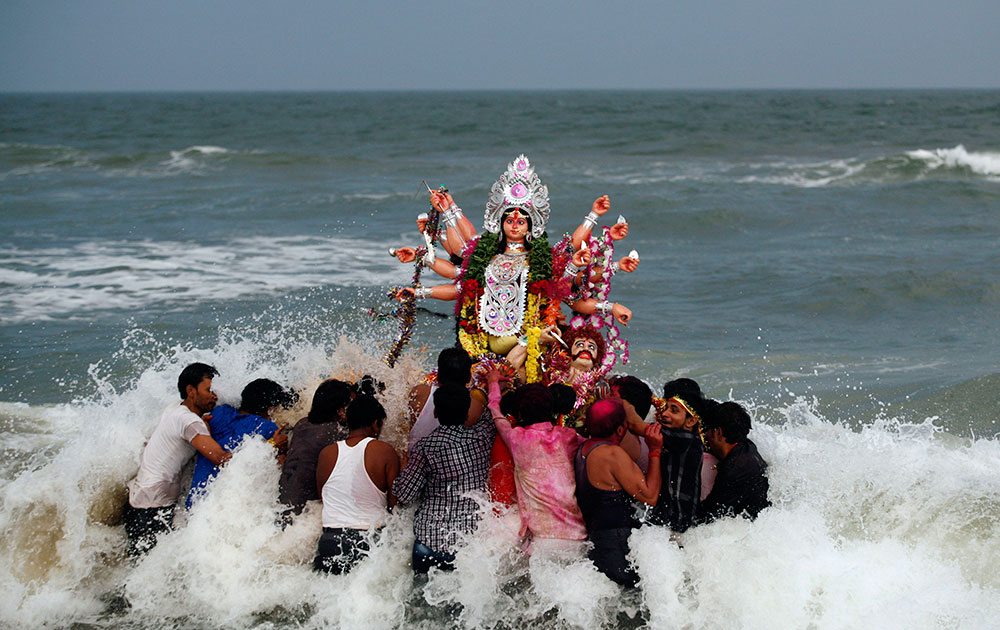
Bengalis love celebrating Durga Pooja with fun, laughter, ornaments, dresses, and food. But the most prominent highlight of any Durga Pooja is the dazzling and impressive idols of the mother goddess in pandals strewn across the state and beyond.
The artisans who make these idols have been in this business for a long time now. And by virtue of their artistic prowess, the idol makers have moved from simple statutes to almost life-like sculptures. I have tried to bring some illustration of idol-making of Mahishasurmardini, right from the clay modulation to the formation of the Devi.
1. The basic process of idol making of Goddess Durga begins with the figurine of the deity made from hay.

2. Then clay or specially made mud is used on the hay figurine.
3. Right from collecting mud, the entire process of making an idol is considered extremely sacred.
4. Every artisan at Kumortuli is busy throughout the year in making idols.
5. Kolkata specializes in preserving the age-old traditions of making clay idols.
6. Idols of the goddess are made to commemorate the triumph of good over evil.
7. Kumortuli boasts of the presence of more than 100 women artisans other than around a thousand men.
8. Colors of many shades are prepared especially for the idols.
9. The idols of Durga are made with so much care that they appear like life-like when completed.
10. The idol of the goddess is often prepared as a separate part, with each part combined later.
11. The general view of Kumortuli.
12. Artisans specialize in idol-making of goddess Durga and this quality runs in their blood!
13. The perfectly formed silent yet blameless looks of Durga Ma.
14. Coloring the eyes of goddess Durga calls for great patience and care. It appears as if the artist has donated his own eyes.
15. The real picture behind the making of the perfectly sculpted Mahishasurmardini.
16. Proud to see such artisans making better idols year after year even though their financial status remains the same.
17. Their work is so flawless that they can be called the ‘God Makers of Kumortuli’.
18. These artisans uphold the legacy of making Devi Ma every year.
19. With the swift moves of their figures, the artisans work on giving the finishing touches to Durga.
20. And finally, the Devi is adorned with beautiful saree and ornaments.















